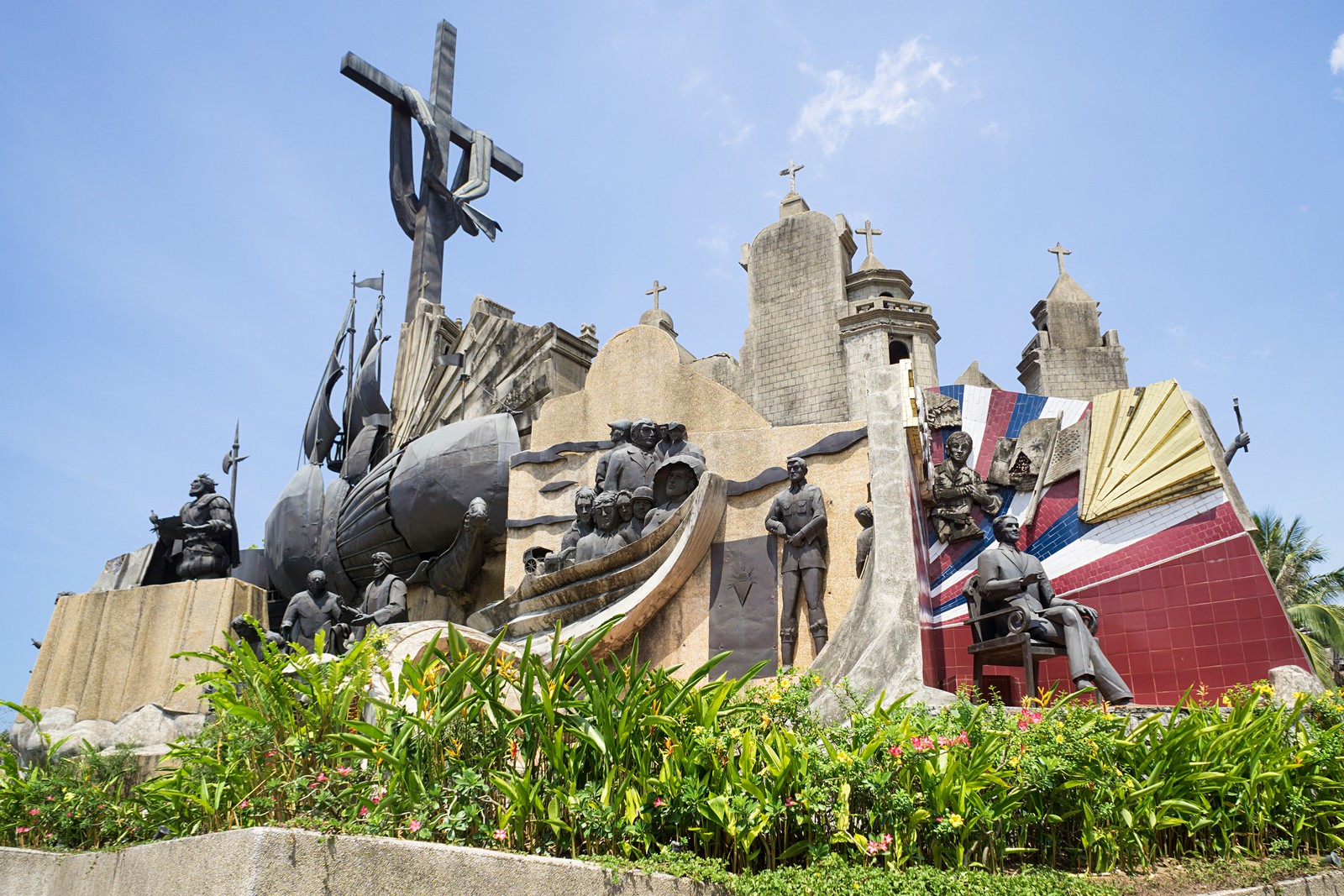It is an extravagant bronze tableau masterpiece by local artist Eduardo Castrillo and was constructed from July 1997 to December 2000. The work depicts the most historical events of Cebu – starting from the time of Rajah Humabon, the infamous Battle of Mactan, up to the beautification of Cebuano martyr Pedro Calungsod. The spot where the monument stands now, the Parian, is very historical. It used to be a home to the residences of the most prominent families in Cebu during the Spanish Period. It also used to be the center of trade between the locals, the Chinese and Spanish mestizos. The word “parian” was derived from the word “pari-pari” meaning to barter or trade. It was also where the wealthy Chinese merchants held lavish events. It is also where the St. John the Baptist church formerly stood but was demolished in 1875 by the diocese of Cebu.
Attraction & Features:
The sculptures are made of brass, bronze, concrete, and steel.
One of the structures is of Ferdinand Magellan and Datu LapuLapu.
It was built by the national multi-awarded artist Eduardo Castrillo.
The sculptures that portray the conversion to Christianity of Rajah Humabon
The festival is the grandest event celebrated on the island, with millions of people flocking to the streets to experience the festivities. The celebration includes a street dancing competition, higantes, and different floats carrying local celebrities.
